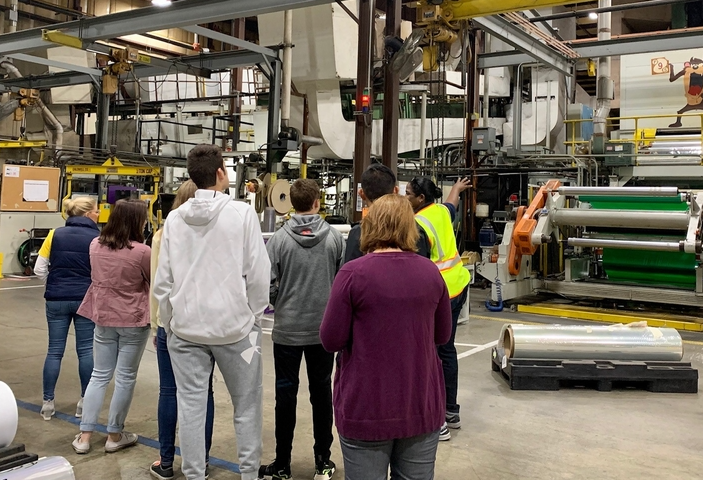
5 Simple Steps of Procurement in Manufacturing
June 2, 2020
Automation: The Driver for Change
July 28, 2020Engaging Students in Manufacturing
_____________________________________________________________________________________________________________________________________________________________________
By Robbie West | Published June 30, 2020
_____________________________________________________________________________________________________________________________________________________________________
Getting younger generations excited about careers in technical fields is something that manufacturing executives have been trying to accomplish for years. Let’s face it, a career in manufacturing does not sound as exciting as a doctor or a lawyer, but that doesn’t mean that students should not look forward to a career in manufacturing. With Baby Boomers on the verge of retiring, Generation Z is in a unique position to take over the manufacturing industry. Executives for manufacturing companies are starting to recruit students as early as junior high. However, there are different ways executives are going about recruiting. Manufacturing Day is the most commonly practiced technique used to spark students’ interests in technical careers. Manufacturing Day was established to improve public perception of manufacturing careers and the value it brings to the U.S. economy. During Manufacturing Day, companies bring in students from local high schools and give them tours of their facilities and explain the roles of different jobs within the company. Bringing students in to tour a facility increases their chances of choosing a career in manufacturing compared to if he/she never steps foot into a manufacturing facility. A big misconception is that all manufacturing jobs will have you coming home filthy, but this is not the case anymore. There are still many blue-collar jobs out there that require an employee to get their hands dirty. However, due to automation and technological improvements, many manufacturing jobs only require employees to program machines.
According to studies, “64% of high school students choose their career based on both their interests and experiences”. The earlier a child is exposed to manufacturing, the better chance he/she will migrate towards it. Schools are implementing different programs to inspire students to consider manufacturing. The BOTS IQ program is a unique way different schools in Pennsylvania are engaging students in manufacturing. This program lets students build robots and compete with one another. Students get to work side-by-side with mentors from manufacturing companies or teachers. Instead of a teacher or manufacturer lecturing for an hour, these mentors are encouraged to sit down one-on-one with students and answer any questions they might have.
Science, Technology, Engineering, and Math (STEM) schools are another way the manufacturing executives are recruiting. STEM programs focus on project-based learning, where kids are faced with real-world problems. This technique is used to develop students’ critical thinking and problem-solving skills. Developing these skills is vital for success in fields such as manufacturing. STEM programs ultimately focus on preparing students for careers in high-demand technology fields. This can be the optimal recruitment pool for manufacturing executives to choose future employees. Manufacturers focus on innovation and problem-resolution to stay ahead of the competition. Recruiting students who are groomed for these precise things are just what executives want.

Career & Technical (CTE) has up to 16 different career tracks, depending on the location, that teaches students different tech-based and career-oriented skills.
Career and Technical Education (CTE) programs are a more hands-on approach for recruiting students. CTE programs date back 30 years ago and have since expanded throughout the United States. There are as many as 16 different CTE tracks to choose from. This spans over a variety of career fields, which helps every student find their passions. CTE programs start as early as junior high and span to post-secondary institutions. Once a student completes their CTE program, they have the opportunity to earn the correct certifications needed to start their careers.
Offering summer jobs and internships to high school students is another great way to recruit future employees. High school kids all over the U.S. look for summer jobs each year to earn a little extra cash. Offering part-time jobs or internships may spark a kids’ interest in manufacturing. Spending the summer learning the ins-and-outs of manufacturing may plant a seed for that kid’s future. If a company feels that a student has potential, they should encourage the student to go to a technical school. Offering the student a scholarship may incentivize them to return to the company one day after receiving a proper education.
There are numerous opportunities for executives to recruit and groom the next generation of manufacturing employees. If you are a company that has not utilized any of these options so far, it’s okay! You’re not too late. There are programs all over the U.S. that run year-round prepping students to enter technical fields. However, I recommend starting your company-specific local programs to engage the student’s in your community.


